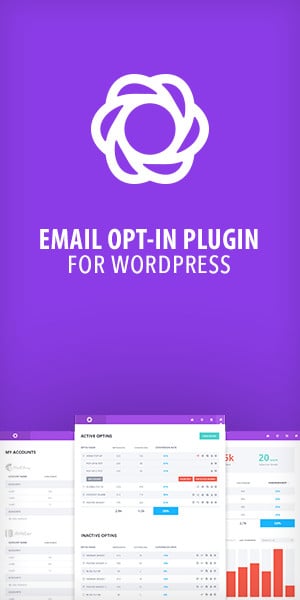Understanding your target audience is not just a step, but the very foundation for all successful online visibility strategies.
It’s the key that empowers your content to resonate with the people who matter most-your ideal customers.
Without a deep understanding of your target audience, you’re essentially shooting in the dark, hoping your content will magically appeal to the masses.
This can lead to wasted resources, missed opportunities, and a lack of engagement from your audience. It’s crucial to invest time and effort into understanding your audience to ensure your marketing strategies are effective and efficient.
But, let’s face it, that’s not how it works.
Target Audience Analysis
How do you identify your target audience? To truly connect with your audience, you need to know what makes them tick, what keeps them up at night, and what problems they want to solve. This requires empathy, the ability to understand and share the feelings of another.
By putting yourself in your audience’s shoes, you can gain a deeper understanding of their needs and motivations, which can inform your marketing strategies.
This means digging more deeply than demographics and exploring their pain points, interests, and behaviors.
Demographic Analysis
Demographic analysis is critical to understanding your target audience. For instance, if you’re a fitness brand targeting women in their 30s, your marketing strategy would be different from one targeting men in their 50s. It involves examining specific characteristics such as age, gender, income level, education, and geographic location.
This analysis is essential as it helps businesses tailor their marketing strategies to more effectively meet their audience’s needs and preferences.
By understanding these demographic factors, companies can create personalized messages that resonate with their audience, ultimately driving engagement and conversions.
To conduct a demographic analysis, start by collecting data through surveys, customer records, and social media analytics. Then, segment your audience based on shared characteristics to identify distinct groups. This will help you understand your audience better and tailor your marketing strategies accordingly.
Utilize tools like Google Analytics to gain insights into the demographics of your website visitors. Analyzing this data helps create detailed buyer personas and fictional representations of your ideal customers.
These personas guide your marketing efforts, ensuring that your content, product offerings, and advertising campaigns align with your target audience’s specific needs and behaviors. For instance, if your audience is primarily interested in health and wellness, you can create content that provides tips for maintaining a healthy lifestyle or develop products that promote well-being. This targeted approach enhances customer satisfaction and maximizes marketing efficiency and ROI.
Psychographic Profiling
Psychographic profiling is a technique used to understand the psychological attributes of your target audience, including their interests, values, lifestyles, and attitudes.
This method goes beyond basic demographics to better understand what motivates and influences your audience.
Its importance lies in creating highly personalized marketing strategies that resonate more deeply with your audience, leading to increased engagement and loyalty.
To conduct psychographic profiling, conduct thorough market research using surveys, interviews, and focus groups to gather qualitative data about your audience’s preferences and behaviors.
Utilize tools like social media analytics and natural language processing (NLP) to analyze online conversations and identify common themes and sentiments.
Creating detailed psychographic profiles or personas helps marketers tailor their messaging and content to align with the psychological drivers of their target audience, ultimately leading to more effective and targeted marketing campaigns.
Behavioral Insights
Behavioral insights refer to understanding consumer behavior based on their actions, preferences, and decision-making processes.
This approach is crucial for marketers aiming to deeply understand their target audience, as it provides valuable data on how and why consumers interact with products and services.
By leveraging behavioral insights, businesses can tailor their marketing strategies to meet their audience’s specific needs and preferences, leading to more effective campaigns and higher engagement rates.
To gather behavioral insights, analyze customer data from various touchpoints such as website interactions, purchase history, and social media activity.
Tools like Google Analytics and CRM systems can track and compile this data, revealing patterns and trends in consumer behavior. Surveys and feedback forms can provide qualitative data, offering more profound insights into customer motivations and preferences.
Incorporating Natural Language Processing (NLP) techniques can enhance the analysis by extracting sentiment and intent from customer reviews and social media comments.
This comprehensive understanding of your target audience’s behavior allows you to refine your marketing efforts, improve customer satisfaction, and drive business growth.
Market Research Methods
Market research methods are essential for understanding your target audience and crafting effective marketing strategies.
Businesses can gather valuable data about consumer preferences, behaviors, and needs by employing various techniques such as surveys, focus groups, and social media analytics.
Market research is important because it can provide insights into what drives your audience’s purchasing decisions, enabling you to tailor your products and marketing messages to better meet their expectations.
To conduct market research effectively, start by defining clear objectives and identifying the specific information you need about your target audience. Use surveys to collect quantitative data on demographic factors and employ focus groups to gain qualitative insights into consumer attitudes and motivations.
Additionally, leverage social media analytics to track engagement and real-time trends. Combining these methods will give you a comprehensive understanding of your audience, allowing you to create more targeted and impactful marketing campaigns.
Understanding your target audience through market research is not just about collecting data; it’s about interpreting this information to make informed decisions that enhance customer satisfaction and drive business growth.
For example, if your market research shows that your audience is primarily interested in convenience, you can focus on making your products or services more accessible to them.
By continuously refining your approach based on research findings, you can stay ahead of market trends and maintain a competitive edge.
Creating Buyer Personas
Creating buyer personas is a crucial step in understanding your target audience. Buyer personas are detailed, semi-fictional profiles of your ideal customers based on market research and actual data about your existing customers. They help businesses tailor their marketing efforts and product development to meet their audience’s specific needs and preferences. You can create personas that provide deep insights into your target audience by considering demographics, psychographics, behavior patterns, motivations, and goals.
To create effective buyer personas, start by conducting comprehensive market research. Gather data through surveys, interviews, and analysis of customer interactions.
Look for patterns in demographics, such as age, gender, and income, as well as psychographic details like interests, values, and lifestyle choices. Incorporate insights from behavioral data, examining how customers interact with your brand, their purchasing habits, and their decision-making processes.
For a deeper understanding, utilize tools to analyze customer feedback and social media conversations.
Once you have collected sufficient data, segment your audience into distinct groups and create detailed personas for each group.
- Give each persona a name, photo, and background story to humanize them.
- Outline their specific needs, challenges, and how your product or service can solve their problems.
- Regularly update your personas as your audience evolves to ensure your marketing strategies remain relevant and practical.
This can be done by conducting regular market research, monitoring customer feedback, and staying updated on industry trends.
By creating and leveraging buyer personas, you can enhance your ability to connect with your target audience, leading to more personalized marketing efforts and better business outcomes.
Adjusting Strategies
Adjusting strategies for target audiences is crucial because it ensures your marketing efforts remain practical and relevant.
Continuous refinement based on audience feedback and behavior changes lets you stay attuned to your audience’s evolving needs and preferences.
By analyzing feedback, social media interactions, and purchasing patterns, you can identify shifts in consumer behavior and adjust your tactics accordingly. This might involve tweaking your messaging, updating your product offerings, or exploring new channels to reach your audience.
Consistently refining your approach helps maintain engagement, build stronger customer relationships, and drive better business outcomes.
Regularly monitor key performance indicators (KPIs) and gather feedback through surveys, reviews, and social media listening tools to effectively adjust your strategies. Use this data to identify trends and areas for improvement. Implement changes incrementally and measure their impact to ensure they resonate with your target audience. Staying flexible and responsive to feedback allows your brand to remain competitive and aligned with your customers’ needs.
Conclusion
By understanding your audience’s needs, addressing their concerns, and providing deeply resonated value, you can craft content that speaks directly to them.
This approach makes your audience feel understood and catered to, leading to increased engagement, shares, and, ultimately, a significant boost in your online visibility.
- Demographic Analysis: Understanding the age, gender, income level, education, and location of your audience to tailor your messaging effectively.
- Psychographic Profiling: Examining the interests, values, lifestyle, and attitudes of your audience to create more personalized and engaging content.
- Behavioral Insights: Analyzing purchasing behavior, brand loyalty, and online activity to understand what drives your audience’s decisions.
- Market Research Methods: Utilizing surveys, focus groups, and social media analytics to gather data on your audience.
- Creating Buyer Personas: Develop detailed profiles of your ideal customers to guide your marketing strategies.
- Adjusting Strategies: Continuously refine your marketing tactics based on audience feedback and behavior changes.
As a result, you’ll be rewarded with increased engagement, shares, and a significant boost in your online visibility.




